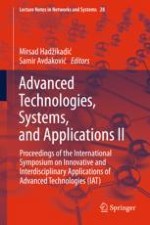2018 | OriginalPaper | Chapter
Soft to Hard Data Transformation Using Uncertainty Balance Principle
Author : Migdat Hodzic
Published in: Advanced Technologies, Systems, and Applications II
Publisher: Springer International Publishing
Activate our intelligent search to find suitable subject content or patents.
Select sections of text to find matching patents with Artificial Intelligence. powered by
Select sections of text to find additional relevant content using AI-assisted search. powered by
